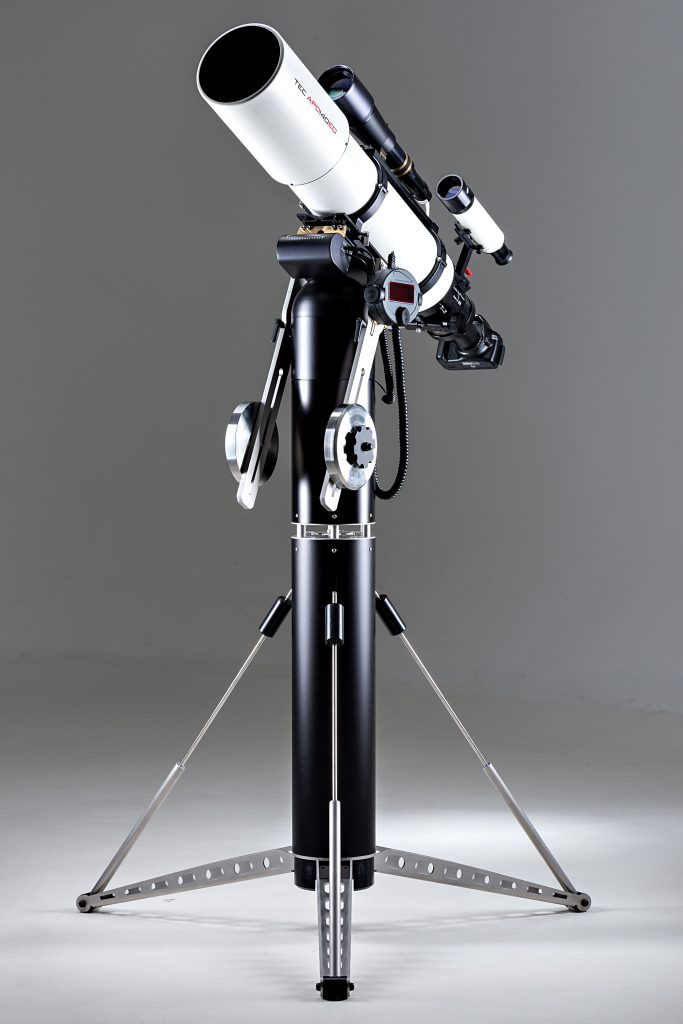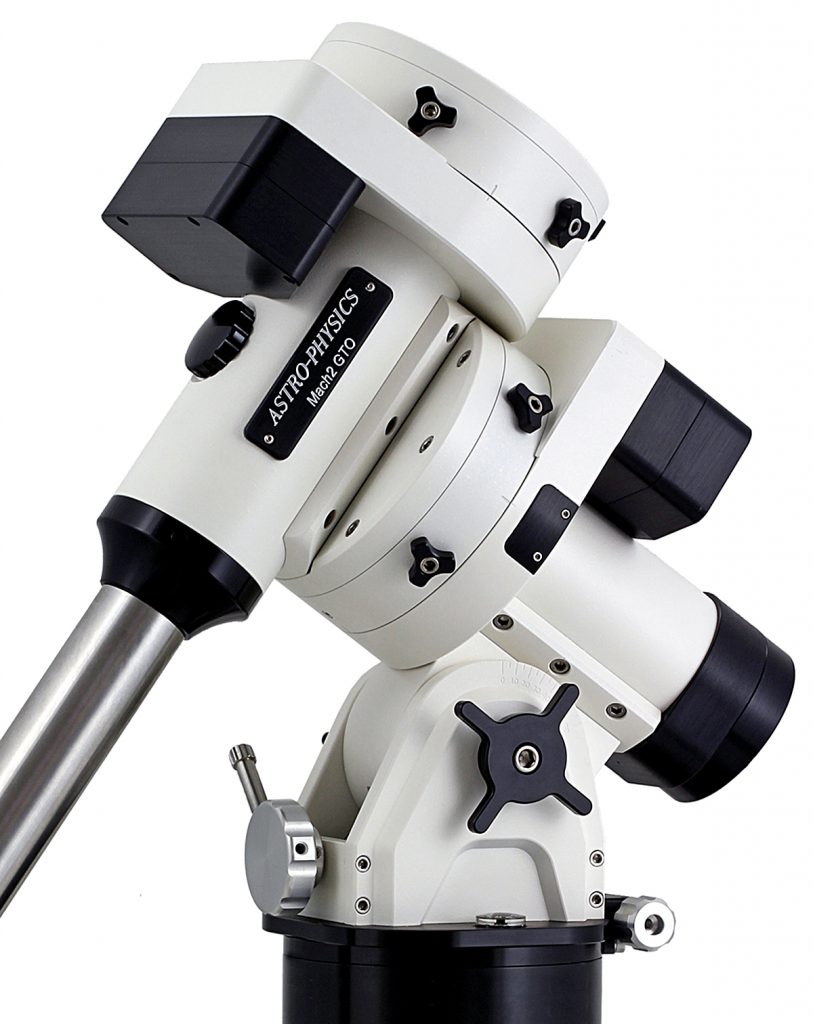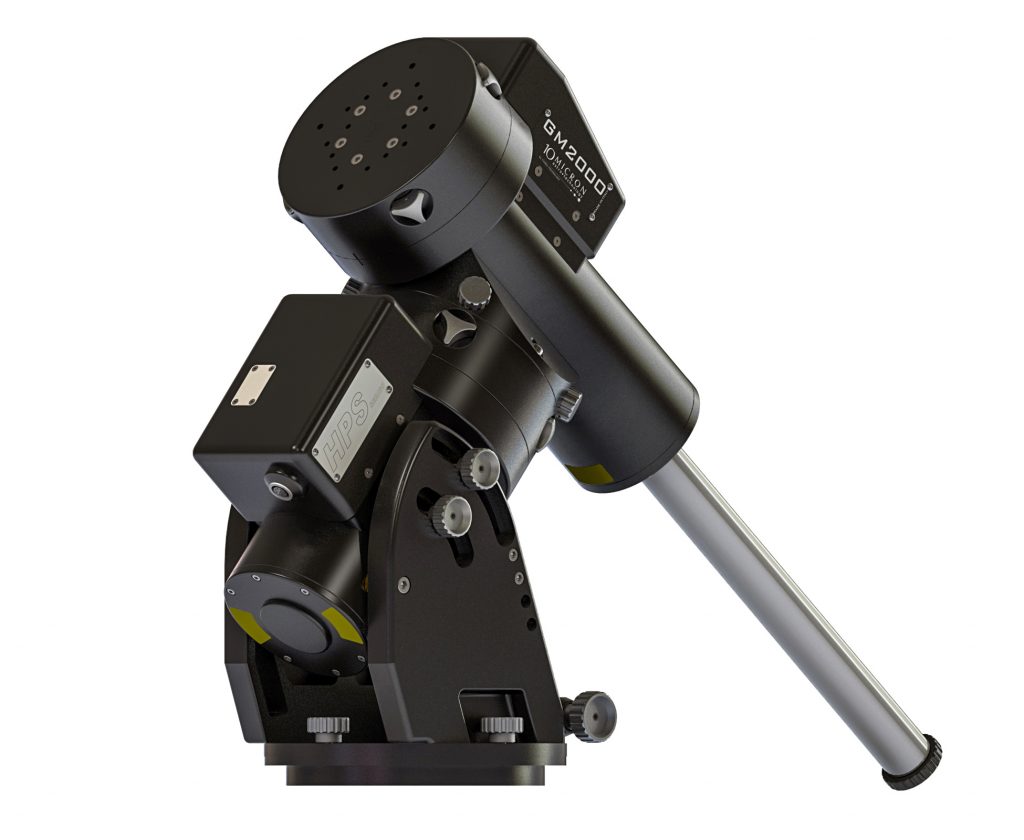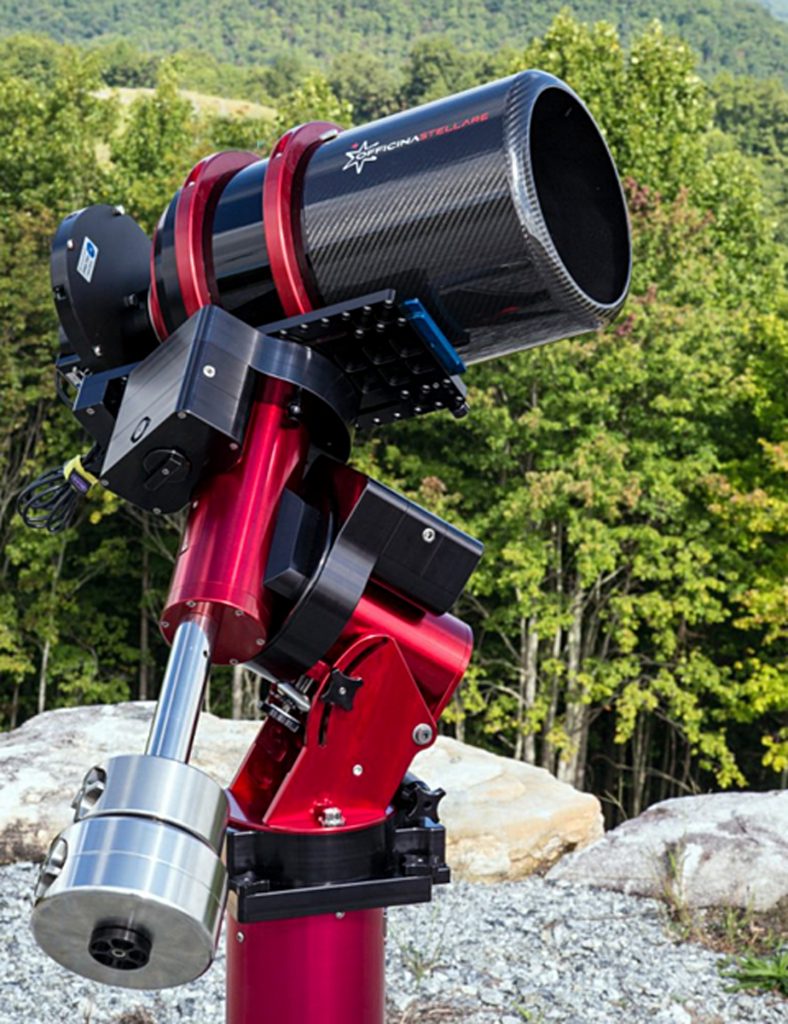JULY 2021
Thoughts about Telescope Mounts: 4 – Premium Mounts
[This is just one of many articles in the author’s Astronomy Digest.]
These are computerised mounts that any amateur astronomerwould be proud to own. They mounts willhave a greater load capacity than less expensive mounts – useful if one wereastroimaging with a large refractor or Schmidt-Cassegrain, guide scope, cooledCCD camera and filter wheel. They willhave larger diameter drive gears which should allow for more precise tracking, their‘GoTo’ precision will be higher and will either be used with substantial tripodsor be used mounted on a fixed pier. Someare ‘portable’ and some definitely not and will often be installed in an dome or‘Roll on,Roll off roof’ observatory. Itis only possible to cover a few in this article including two that I own anduse – which is, I hope some recommendation. As premium mounts are made in far smaller quantities, their costs arehigh but they can sometimes be bought second hand using a website, such as ‘https://www.astrobuysell.com/uk/’,at significant savings on their new prices.
The Track the StarsTTS-160 Panther Telescope Mount
This is a portable Alt-Az mount which also allows forprecision equatorial tracking and is, perhaps, the most portable of any ofthose mentioned in this article. With aload capacity of 20 kg, it can be set up and aligned in around 7 minutes with nolevelling or polar alignment required. For astrophotography, TTS provide a ‘rOTAtor’ mounted between the headand the Telescope Tube assembly (OTA) which allows for total exposures of from1 to 3 hours dependent on the sky position of the object. In common with all Alt-Az mounts, there is no‘meridian flip’ as an object crosses the meridian – a great help whenastroimaging. As with many Alt-Az mountsit can either be used with one telescope and counterweight or with twotelescopes. Including the rOTAtor, itcosts from ~£5,000 from Peak2Valley.co.uk . I have to say that I would really like to own one of these mounts.

The Losmandyequatorial mounts.
Losmandy is an American company which provides a range offour mounts beautifully constructed entirely of machined aluminium and stainless steel with load capacitiesranging from 13.6 kg up to 45 kg. Thelowest cost is the GM8, at ~£3,000, which is equipped with the Gemini 2 ‘Goto’drive system. I bought anun-computerised version, no longer available, some 17 years ago and it hasgiven me sterling service over that time. As its tripod and head are not too heavy (7 and 9.5 kg respectively), itis easy to transport and I now use it to take to star parties. I equipped mine with encoders and an ArgoNavis computer controller to provide a ‘push-to’ mount – made very easy to usedue to its variable tension clutches on both axes.
Their next product was the G11, now costing ~£4,000, owned and used withgreat effect by a colleague. This moresubstantial mount has a load capacity of 27 kg with the equatorial head weighing some 15 kg and the tripod 16 kg– so not so portable. More recently,they have brought out a mount called the GM811G which, at a cost of ~£3,400,amalgamates much of the GM8 mount with the GM11 RA drive. This has a larger RA drive gear so givingsmoother tracking for photographic use and an enhanced load capacity of 22 kg. I suspect that this may now be a better buythan the GM8.

At the top of their range is the GM11 GT at a cost of ~£4,700 which hasa more substantial ‘Titan’ RA axis drive which as load capacity for photographicuse of 34 kg and with tracking performance of equal or better than +/- 5 arcseconds.
PointingEnhancements
Premium mounts may well be equipped with ‘absolute encoders’ rather thanwhat are, in effect, ‘incrementalencoders’ when the pointing is determined by counting the steps made by thestepping motors. This greatly improvesthe ‘GoTo’ and tracking performance of the mount. For example, the Astro-Physics Mach2GTOdescribed below uses absolute encoders with an accuracy of a quarter of an arcsecond giving a tracking performance with a similar periodic error soautoguiding is not required.
Some premium mounts such as those made by Software Bisque and 10microncan employ what is called ‘TPoint’ assisted pointing accuracy. By synchronising the mount on stars spacedaround the sky, a ‘model’ of the telescopes uncorrected positional errors ismade which is then used to compensate for systematic errors in the mounts‘goto’ performance so giving the mounts a very precise pointing accuracy.
The Astro-PhysicsMach2GTO
This is perhaps one of the highest load capacity mounts that can be regardedas portable and is an upgrade of the Mach1 mount, that I have been using forsome years and permanently mounted in my garden on its combinationpier/tripod. The Mach1 could well beworth buying second-hand if one can be found. One nice feature is that the electronic control unit can be easilyremoved and brought inside so eliminating any damp problems if, as mine, themount is permanently located outside – in the open, but well covered. The Mach2 has a load capacity of 34 kg and isequipped with absolute encoders to provide superb pointing and trackingperformance. A good feature is that thesetwo mounts will not do a ‘meridian flip’ as the object crosses the meridianproviding that the scope will clear the mount. This is really useful as one is often imaging when an object lieshighest in the sky towards the south.

10Micron mounts
Their lowest cost mount is the GM1000 HPS at ~£7,600 from TringAstronomy Centre which has a load capacity of ~25 kg and powered with 24 voltsDC. As with the Mach2 mount, it willusefully track for 30 degrees past the meridian. Its TPoint modelling can include 100 stars andthe absolute encoders give a tracking accuracy of ~1 arc second without autoguiding. A very solid tripod is available at a cost of~2,000. This could thus perhaps be regardedas a portable mount and 24 volt 28 Ah batteries are available, designed foreBikes. The separate electronics controlpackage can be stored ‘in house’ so avoiding any damp problems. If a higher load capacity is required, threefurther mounts are available including the GM2000 HPS II ‘Ultraport’ GermanEquatorial Mount having a payload of 50 kg at a cost of ~£12,000.

Software BisqueParamounts
Their lowest cost mount is the MYT portable system with the equatorial head costing ~£6,500 and available from Rother Valley Optics. It has a load capacity of 23 kg and a maximum periodic error before correction of 7 arc seconds. It employs a belt driven to remove backlash and provides around 1 arc second tracking after periodic error correction. A portable tripod at £2,900 or pier/tripod at £1,300 are available but I suspect that they will usually be pier mounted in an observatory. Larger mounts with greater load capacities of 45 kg and 109 kg are available at greater cost. All mounts are supplied with a 240 volt mains power supply supplying 48 volts, so perhaps making them more suitable for permanent installation. The mount also uses the TPoint modelling system to give 30 arc second pointing accuracy.
